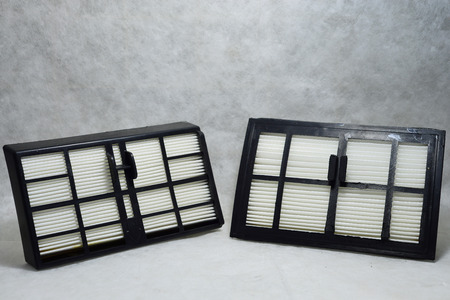If a state-of-the-art filter in your home ventilation system helps you breathe easier, you have history – and an atomic development program – to thank.
 The High Efficiency Particulate Air filter, or HEPA filter, in your home has surprisingly auspicious beginnings. You’ll remember, likely from history class, the U.S. government’s program to develop an atomic bomb eventually helped bring about an end to World War II following the detonation of two bombs in 1945, which brought the war to a close.
The High Efficiency Particulate Air filter, or HEPA filter, in your home has surprisingly auspicious beginnings. You’ll remember, likely from history class, the U.S. government’s program to develop an atomic bomb eventually helped bring about an end to World War II following the detonation of two bombs in 1945, which brought the war to a close.
More than 120,000 people during the course of several years were involved in the mission, nicknamed The Manhattan Project, though far fewer were at the heart of this highly classified secret project. Those who were, though, faced unprecedented physical danger from simply breathing. Radioactive particles in the air – a particular occupational hazard – could harm some of the world’s most brilliant scientists and the many others involved in the groundbreaking project. Air filtration became of paramount importance.
Scientists knew that radioactive fallout is made up of microscopic particles, and those particles could be physically trapped by another piece of matter – a filter. The result was the HEPA filter, capable of trapping 99.97 percent of the impurities in the airflow, down to as small as 0.3 microns.
HEPA technology was declassified after World War II, and the passing decades have improved upon an intrinsically excellent technology. Today, you can purchase HEPA filters for air purifiers, vacuum cleaners, furnaces, air conditioners, in personal filtration masks and in products available all across the world. Allergy sufferers, industrial workers, hospitals, homes, offices – HEPA filters are hard at work nearly everywhere, trapping contaminants and pollutants too small to see and keeping them out of our lungs.
Scientists will explain the HEPA filtration process in great detail, but for the rest of us, here’s a clear explanation:
Stage 1: A pre-filter captures the largest dirt, dust and pollen particles before entering the HEPA filter itself.
Stage 2: The thin glass fibers of the HEPA filter are packed tightly together and arranged in a configuration that allows air molecules to pass through, but traps contaminants and pollutant molecules. Almost all airborne particles are captured through the filtration process.
Stage 3: Volatile organic compounds (VOCs) provide a third filtering stage. This carbon filter purifies air and eliminated odours, gases and other impurities that may still be present after passing through the HEPA filter.
The genius design of the HEPA filter hasn’t changed in its simplicity – though patent after patent brings more improvements – and it still offers some of the most comprehensive filtration available, providing you with clean, healthy air in your home or business.
Superior Air Duct Cleaning offers HEPA filters and full filtration systems as part of our services that help to keep the air quality great in buildings throughout the Greater Toronto Area. To learn more or to request a quote, call us at 877-891-3828 today!


Leave a Reply